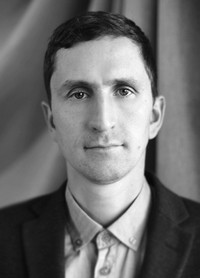BIOMECHANICAL PARAMETERS OF RUNNING TECHNIQUE IN THE DISTANCE OF SPRINTER FINALISTS OF THE WORLD CHAMPIONSHIP
Keywords:
sprinting, sprinting technique, 100 and 200 m running, spatiotemporal and kinematic characteristics of running, biomechanical parameters of sprintingAbstract
Objective of the study was to compare the spatio-temporal, kinematic and angular characteristics of the running technique over the distance of the strongest sprinters in the world at 100 and 200 m.
Methods and structure of the study. As a methodological basis for the study, one of the methods of biomechanics, analysis, was adopted. The data of spatio-temporal, kinematic and angular characteristics of distance running, presented in the IAAF biomechanical report of the men's 100 and 200 m finals of the 2017 World Championships in Athletics, were analyzed.
Results and conclusions. In the middle of the straight in the 100 m run, the average speed is 11.60 ± 0.06 m/s, in the 200 m run - 10.31 ± 0.09 m/s. The difference in speed is achieved due to the frequency of steps (4.80±0.08 and 4.27±0.05 sh/s, respectively, p≤0.05), since the step length at both distances is identical and equals on average 2 .42 m. A greater frequency of steps per 100 m is achieved due to the shorter time of the reference (0.093±0.002 and 0.103±0.002 s, p≤0.05) and unsupported (0.116±0.002 and 0.132±0.003 s, p≤0.05) periods . When placing the leg on the support, significantly significant differences (p≤0.05) are observed in the angle of the torso, the angle between the thigh of the fly leg and the vertical. When removing the leg from the support, a significantly significant difference (p≤0.05) is observed in the angle of the torso and the angle between the lower leg of the supporting leg and the horizontal line.
References
Balandin S.I., Balandina I.Yu. Sovershenstvovaniye takticheskogo masterstva v podgotovke vysokokvalifitsirovannykh beguniy na 400 m [Improving tactical skills in the training of highly qualified 400 m runners]. Sport, chelovek, zdorovye. [Sport, man, health]. Proceedings International Congress, December 8-10, 2021, St. Petersburg, Russia. St. Petersburg, 2021. pp. 53-55.
Balandin S.I., Balandina I.Yu., Dmitriev I.V. et al. Sravnitelnyy analiz osnovnykh kharakteristik tekhniki preodoleniya distantsiy 100 s/b i 110 s/b silneyshimi baryeristami i baryeristkami mira [Comparative analysis of the main characteristics of the technique of overcoming distances 100 s/b and 110 s/b by the strongest hurdlers and hurdlers of the world]. Teoriya i praktika fizicheskoy kultury. 2021. No. 7. pp. 32-35.
Bissas A., Walker J., Tucker C., and Paradisis G. (2018). Biomechanical Report for the IAAF World Championships 2017: 100 Metres Men. Birmingham, UK: International Association of Athletics Federations.
Pollitt L., Walker J., Tucker C. and Bissas A., (2018). Biomechanical Report for the IAAF World Championships 2017: 200 Metres Men. Birmingham, UK: International Association of Athletics Federations.

Additional Files
Published
Versions
- 22-08-2022 (3)
- 22-08-2022 (2)
- 22-08-2022 (1)

